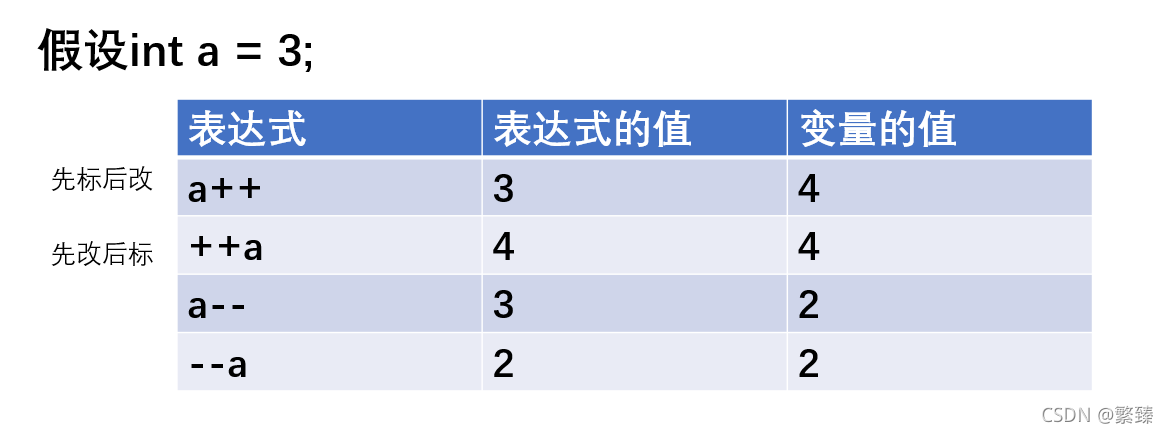王道数据结构实践代码----顺序栈的实现(C语言版)
前言
日期:2021年10月28日
书籍:王道2021年数据结构考研复习指导
代码内容:实现顺序栈的基本实现,主要功能如下:
? 栈的数据结构
? 出栈
? 入栈
? 判栈空
? 读栈顶
代码难点
1.关于i++和++i的使用

代码展示
1.顺序栈的数据结构
//【1】预编译部分
#include <stdio.h>
#include <stdlib.h>
//【2】宏定义部分
#define bool char
#define true 1
#define false 0
//【3】自定义变量部分
#define MaxSize 50 //定义栈中元素的最大个数
//【4】顺序栈的数据结构
typedef int Elemtype; //自定义顺序栈的数据元素类型
typedef struct SqStack
{
Elemtype data[MaxSize];
int top; //栈顶指针
}SqStack;
2.顺序栈的初始化和判空
//【5】顺序栈的初始化
bool Initstack(SqStack *S)
{
S->top = -1; //初始化栈顶指针(判空条件S->top = -1;)
}
//【6】判栈空
bool StackEmpty(SqStack S)
{
if(S.top == -1) return true; //栈空
else return false; //栈不空
}
3.顺序栈的进栈和出栈
//【7】进栈(压栈)
bool Push(SqStack *S,Elemtype e)
{
if(S->top == MaxSize - 1) return false; //栈满,报错
S->data[++S->top] = e; //指针先加1,再入栈
return true;
}
//【8】出栈
bool Pop(SqStack *s,Elemtype *e)
{
if(StackEmpty(*s)) return false; //栈空报错
*e = s->data[s->top--]; //先出栈,指针再减一
return true;
}
4.顺序栈的读栈顶元素
//【9】读栈顶元素
bool GetTop(SqStack S,Elemtype *e)
{
if(StackEmpty(S)) return false; //栈空报错
*e = S.data[S.top];
return true;
}
整体代码
//【1】预编译部分
#include <stdio.h>
#include <stdlib.h>
//【2】宏定义部分
#define bool char
#define true 1
#define false 0
//【3】自定义变量部分
#define MaxSize 50 //定义栈中元素的最大个数
//【4】顺序栈的数据结构
typedef int Elemtype; //自定义顺序栈的数据元素类型
typedef struct SqStack
{
Elemtype data[MaxSize];
int top; //栈顶指针
}SqStack;
//【5】顺序栈的初始化
bool Initstack(SqStack *S)
{
S->top = -1; //初始化栈顶指针(判空条件S->top = -1;)
}
//【6】判栈空
bool StackEmpty(SqStack S)
{
if(S.top == -1) return true; //栈空
else return false; //栈不空
}
//【7】进栈(压栈)
bool Push(SqStack *S,Elemtype e)
{
if(S->top == MaxSize - 1) return false; //栈满,报错
S->data[++S->top] = e; //指针先加1,再入栈
return true;
}
//【8】出栈
bool Pop(SqStack *s,Elemtype *e)
{
if(StackEmpty(*s)) return false; //栈空报错
*e = s->data[s->top--]; //先出栈,指针再减一
return true;
}
//【9】读栈顶元素
bool GetTop(SqStack S,Elemtype *e)
{
if(StackEmpty(S)) return false; //栈空报错
*e = S.data[S.top];
return true;
}
//【10】main函数验证
int main()
{
SqStack S;
Initstack(&S);
Push(&S,1);
Push(&S,2);
Push(&S,3);
Push(&S,4);
Push(&S,5);
Push(&S,6);
Elemtype X; //用与保存出栈和读栈顶元素返回的变量的值
int count = S.top;
for(int i = 0;i <= count;i++)
{
printf("i = %d\n",i);
GetTop(S,&X);
printf("GetTop X = %d\n",X);
Pop(&S,&X);
printf("GetTop X = %d\n",X);
}
return 0;
}
运行效果
